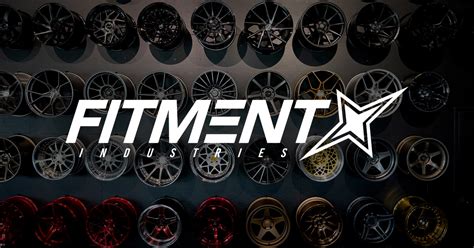Fitment Industries: Optimize Your Shipping Experience
The shipping process is a critical component of any successful business, especially in industries like automotive parts and accessories where accurate and timely delivery is paramount. Fitment Industries, with its focus on providing the right parts at the right time, understands this intricacy. Optimizing your shipping experience isn't just about speed; it's about efficiency, accuracy, and customer satisfaction. This article explores key strategies to streamline your shipping process and enhance your overall operational efficiency, ultimately leading to increased customer loyalty and profitability.
Understanding the Challenges in Fitment Shipping
Before diving into solutions, it's important to acknowledge the unique challenges faced in the fitment industry:
- Complex Inventory: Managing a vast array of parts with specific vehicle fitments requires sophisticated inventory management systems to avoid mismatches and delays. Incorrect fitments can lead to returns, customer dissatisfaction, and increased costs.
- Accurate Data: Ensuring accurate vehicle information (Year, Make, Model, Trim) is crucial for successful order fulfillment. Inaccurate data entry can lead to incorrect part shipments, negatively impacting customer experience.
- Shipping Costs: Shipping costs can significantly impact profitability. Finding cost-effective shipping solutions without sacrificing speed or reliability is a constant balancing act.
- Time-Sensitive Deliveries: Customers often need their parts quickly, especially for repairs or upgrades. Meeting these tight deadlines requires efficient order processing and shipping.
How to Optimize Your Fitment Shipping Experience
Here are some proven strategies to navigate these challenges and optimize your shipping experience:
1. Invest in a Robust Inventory Management System (IMS)
A robust IMS is the cornerstone of efficient shipping. It should allow for:
- Real-time inventory tracking: Knowing exactly what's in stock and where it's located prevents delays caused by inaccurate inventory counts.
- Automated order fulfillment: Automate the picking, packing, and shipping processes to reduce manual errors and speed up order processing.
- Integration with shipping carriers: Seamless integration with shipping carriers streamlines the label creation and tracking processes.
2. Implement Accurate Data Management Practices
Data accuracy is paramount. This includes:
- Double-checking vehicle information: Implement a system of checks and balances to ensure accurate vehicle data entry at every stage of the order process.
- Using standardized data formats: Adopt standardized formats for vehicle data to minimize errors and improve data exchange between systems.
- Data validation: Use data validation tools to flag potential errors before they cause problems.
3. Explore Different Shipping Options & Negotiate Rates
Choosing the right shipping carrier and negotiating favorable rates is crucial for cost optimization:
- Compare carrier options: Evaluate various carriers based on cost, speed, and reliability to determine the best fit for your needs.
- Negotiate volume discounts: Leverage your shipping volume to negotiate better rates with carriers.
- Optimize packaging: Use appropriate packaging to minimize damage and shipping costs. Efficient packaging also helps reduce waste.
4. Leverage Technology for Automation & Tracking
Technology can significantly enhance efficiency:
- Automated shipping labels: Automate label generation to reduce manual work and ensure accuracy.
- Real-time tracking: Provide customers with real-time tracking information to keep them informed about the status of their order.
- Shipping management software: Utilize software that streamlines the entire shipping process, from order placement to delivery confirmation.
5. Prioritize Customer Service & Communication
Excellent customer service is crucial for building trust and loyalty:
- Proactive communication: Keep customers informed about the status of their order, especially if there are any delays.
- Easy returns and exchanges: Provide a straightforward process for returns and exchanges to minimize customer frustration.
- Gather customer feedback: Regularly solicit customer feedback to identify areas for improvement in your shipping process.
Frequently Asked Questions (FAQ)
What is the best shipping carrier for fitment parts? There's no single "best" carrier. The optimal choice depends on factors like your shipping volume, delivery speed requirements, and budget. It's best to compare options from different carriers like UPS, FedEx, and USPS.
How can I reduce shipping costs for fitment parts? Reducing costs involves optimizing packaging, negotiating favorable rates with carriers, consolidating shipments where possible, and choosing the most cost-effective shipping method for each order.
How can I improve accuracy in order fulfillment for fitment parts? Implementing a robust IMS, using standardized data formats, double-checking vehicle information, and employing data validation tools all contribute to greater accuracy.
What are the key metrics to track for shipping performance? Key metrics include on-time delivery rate, order accuracy, shipping costs per order, and customer satisfaction regarding shipping.
By implementing these strategies, Fitment Industries and businesses within the automotive parts sector can significantly optimize their shipping experience, boosting efficiency, reducing costs, and, most importantly, enhancing customer satisfaction. Remember, a well-optimized shipping process is an investment that pays off in improved profitability and strengthened customer relationships.

